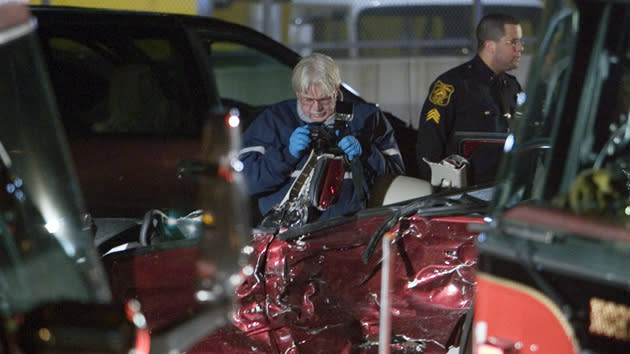 Motoramic
MotoramicTraffic deaths rise after six-year decline in sad sign of better economy
In the past six years, the death toll from driving on American roads has fallen to levels not seen in decades. According to federal data, 32,310 people perished in accidents of all varieties in 2011, a level not seen since 1949, when there were one-fifth as many vehicles on the road. Automakers and auto safety advocates welcomed the drop, hailing technology and safety campaigns for the change. This year, traffic deaths appear to be surging -- and several researchers suspect the decline had less to do with caution and more to do with economics.
Over the past six years, there's been a plethora of new safety features in vehicles, from electronic stability controls to more advanced air bags. As for the drivers themselves, regulators have fought for tougher penalties against drunk drivers, tougher rules for seat-belt use and increased training for younger drivers, all problems that lead to large numbers of road fatalities.
While those measures have helped, something changed this year. The two groups that track U.S. traffic fatalities -- the National Highway Traffic Safety Administration and the National Safety Council -- both say deaths have grown rapidly in the first half of 2012. NHTSA's figures estimate a 9 percent increase from 2012, with a 14 percent gain in the first three months. Advocates had pointed to a falling rate of crashes per every mile traveled as signs of progress, but that measure has risen in the NHTSA estimates as well.
Michael Sivak, a researcher at the University of Michigan Transportation Research Institute, says in a new paper that deaths are rising because the decline itself came from the weak economy. People drove less -- especially on rural roads, which are the most accident-prone routes. Previous research show drivers tend to go slower when gas prices rise, and many crashes begin with someone losing control at excess speed. And the sluggish economy also meant fewer large trucks hauling goods on the road; the crash rate for big trucks has fallen faster than that for passenger cars and trucks.
With the economy growing stronger, those factors have started moving back to normal, Sivak said: "Any sudden, large reduction in fatalities is likely only an unintended by-product of factors that influence the entire transportation system, such as a rapid change in the economy."
It will take more than a year for federal officials to gather enough data to show more specific causes, but experience says making driving safer in a country with 250 million vehicles on the roads has no shortcut to success.

 Yahoo Autos
Yahoo Autos 
